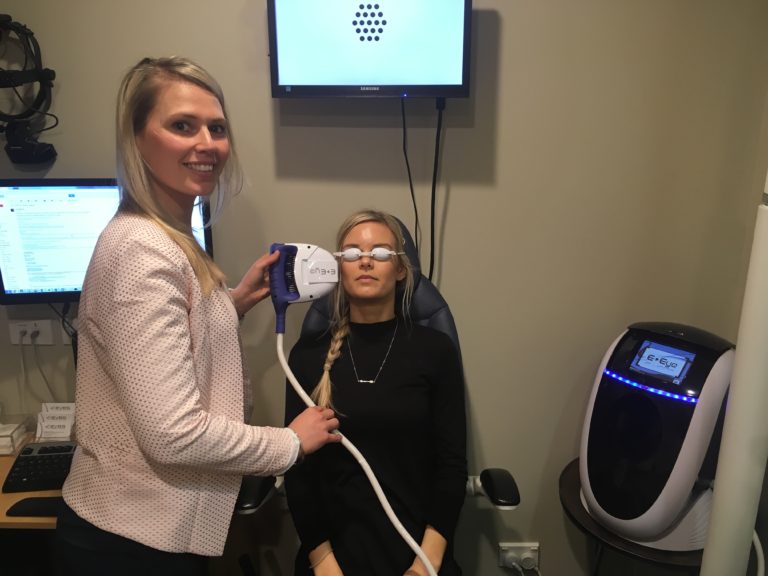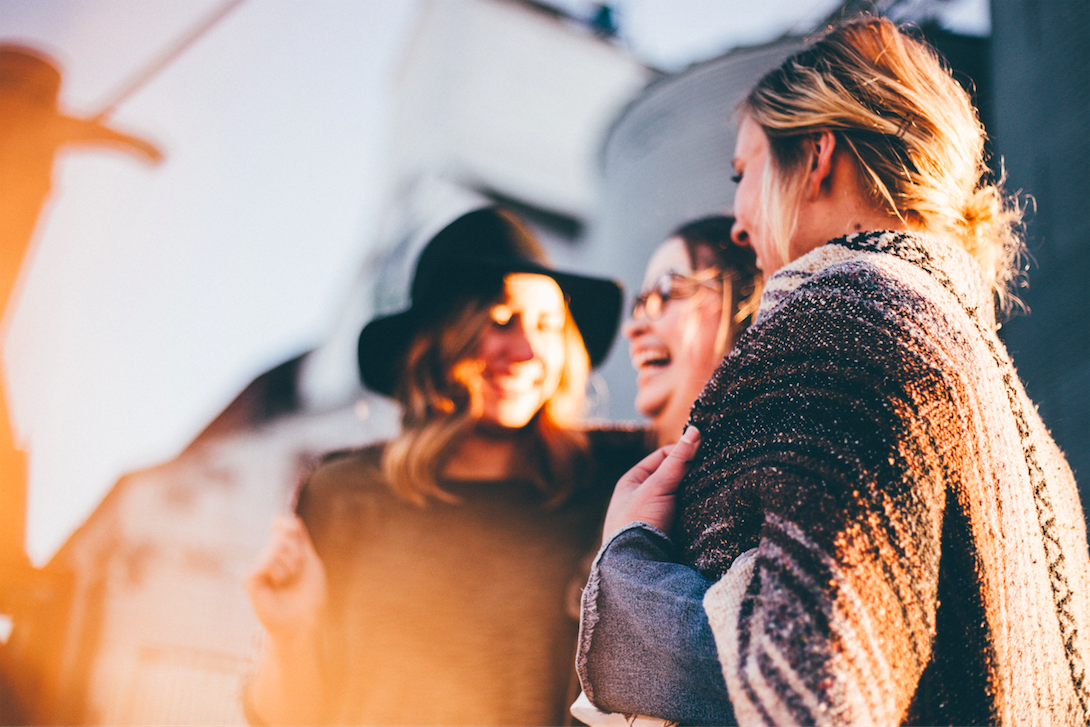IPL Treatment
Do you suffer from dry, red, irritated or watering eyes? These are all symptoms of an eye condition called Dry Eye.
You might find using eye drops only offers temporary relief and that you’re constantly needing to use them. People with dry eye symptoms try an average of 3.8 different types of eye drops before seeing an Optometrist.
At OCULA, we know how important it is to feel your best. That’s why we’re constantly growing ourselves and our technology - so we can help you reach your vision goals.
We offer an advanced treatment for meibomian gland dysfunction (dry eye) using IPL therapy. E-Eye Intense Pulsed Light (IPL) therapy is one of the most effective treatment options for meibomian gland dysfunction, to provide long-term relief of dry eye symptoms.
What is IPL?
IPL is a technologically advanced treatment that has been clinically proven to combat the symptoms of dry eyes. Clinical trials indicate that patients treated with IPL therapy experienced an 86% improvement in the symptoms of chronic dry eyes (burning, irritated eyes, sensitive to light, fluctuating vision, grittiness and blurring).
IPL encourages important, oily secretions in the eyelids to move onto the tear film to keep the eyes moisturized. It is a quick and painless treatment with immediate results. At OCULA, we use the E-Eye: an IPL device that generates polychromatic pulsed light by producing perfectly calibrated and homogeneously sequenced light pulses.
OCULA Director and Principal Optometrist, Danielle Winstone describes the treatment as breakthrough: “It’s exciting as IPL is aimed at addressing the underlying problem that causes dry eyes, rather than eye drops that only provide temporary relief. Patients notice significant improvements in their symptoms, with relief that lasts much longer than conventional treatments.”
How does it work?
The E-Eye IPL machine works by transmitting gentle, yet powerful bursts of light to the tear glands. This softens the natural oily secretions contained in the eyelids, and allows them to be mobilised onto the eye. After intense pulsed light, your optometrist will perform a meibomian gland expression by applying pressure to the eyelids to express the glands and squeeze out the oils. This stabilizes the tear film and reduces feelings of gritty, sore and dry eyes.
Each IPL treatment continues to improve on the previous session.

What happens in a session?
Your optometrist will place protective goggles on your eyes and apply a cooling hydrogel on your skin. They will guide you through the process, and deliver 4-5 intense light pulses to the lower eyelid area. This only takes a few minutes and there’s no injections or needles. After the pulsed light treatment, your optometrist will express the natural secretions from your eyelids onto the tear layer. Each treatment takes 30 minutes.
How many sessions do I need? When will I see results?
The results are immediate and the effect is cumulative. For optimum results, we recommend 4 treatments - which are done in 4 separate sessions. See below for our recommended treatment plan. If any further treatments are needed, your optometrist will discuss this with you at your appointment.
Research shows that 86% of patients show an improvement of symptoms and 95% of patients would recommend the treatment to others.
| No. of IPL treatment sessions | Day | Expected results |
| Initial session | 1 | 1 week relief |
| Second session | 15 | 2 weeks relief |
| Third session | 45 | 3 weeks relief |
| Fourth session | 75 | Up to 24 months relief |

FAQs
What is Dry Eye?
Dry Eye is a broad term describing any range of factors that reduce the volume of tears in the eye. Tears protect the front of the eye, providing lubrication and nutrients to the cornea and creating a smooth front surface for clear vision. They consist of a watery layer to keep the eyes moisturized with an oily layer on top. The oily layer is particularly important for maintaining a smooth surface for consistent vision, and preventing excessive tear evaporation. A reduction in the tear layer may be caused by blocked or poor performing oil glands.This is called Meibomian Gland Dysfunction (MGD).
Without good oils, the tears cannot lubricate the eye properly, causing symptoms which vary from a constant niggle, to severe irritation that affects your quality of life. This leads to dryness, irritation, redness and blurred vision.
Who’s at risk of getting Dry Eye Syndrome?
Dry Eye Syndrome (DES) is a very common condition - affecting more than 20% of adults, both here and in Australia. Unfortunately a lot of aspects of modern living can increase the risk of getting dry eyes. Such as air conditioning, artificial lighting, using your computer or smartphone, air pollution, driving, wearing contact lenses etc.. If you have had cataract surgery or laser eye treatment you may also suffer from DES.
Dry End tends to affect females more than males, and can be part of the natural aging process (especially during menopause). As well as a side effect to many medications, including oral contraception. If you have arthritis, asthma, gout, diabetes, or are over 40 years old, you may also be prone to dry eye.
Do I have Dry Eye?
Are your eyes itchy, scratchy, watery, sticky, sore, red, burny, blurry or just downright grumpy with you? Sounds like dry eye.
Book an appointment with one of our friendly optometrists, below.
Can I get rid of Dry Eye?
Unfortunately dry eye tends to be a condition that requires ongoing management. A bit like having dry legs… sometimes you need more moisturiser than others! The good news is the majority of patients can achieve ongoing, sustained comfort without too many adjustments to their lifestyle.
How do I know if I need IPL treatment?
Your optometrist will be able to advise you on this. We recommend patients see us for a dry eye xxamination, where we take a comprehensive look at a person’s dry eye profile, including symptoms, triggers, medical and lifestyle factors. From there, we will recommend a tailored treatment plan to ensure the best results.
What other treatments exist for Dry Eye Syndrome?
Eye compresses and eye drops can provide temporary relief but often aren’t enough to overcome the daily discomfort for people with DES. On average, people who suffer Dry Eye, try an average of 3.8 different types of eye drops, before seeing an Optometrist.
Is E-Eye IPL treatment safe?
Yes, IPL is safe and painless. During the treatment process, you’ll be provided with goggles to protect your eyes from the bright flashes. Prior to your first session, your optometrist will go over all the details, so you know what to expect and ensure you feel safe and comfortable. This is a great time to ask any other questions you may have.
Will I be able to drive after my IPL session?
Yes, it is completely safe to drive after your treatment.
Can anyone have IPL?
Your optometrist is the best person to answer this. At your appointment, they will discuss your medical history and any other relevant factors or information to ensure E-Eye IPL is the right treatment and completely safe for you. Although IPL is a safe procedure, we are unable to provide IPL therapy if you are pregnant, as there have been no clinical studies or tests done to prove it’s safe for mothers and babies. In the absence of research, we must err on the side of caution.
Book an appointment
Don’t let the frustrating and irritating symptoms of dry eye continue to impact your day-to-day life. At OCULA, our specialised Dry Eye team will work with you to create a tailor made solution for your vision needs.
If you’re interested in IPL treatment, book a free dry eye consultation with one of our optometrists today.
BOOK AN APPOINTMENT IN CHRISTCHURCH

